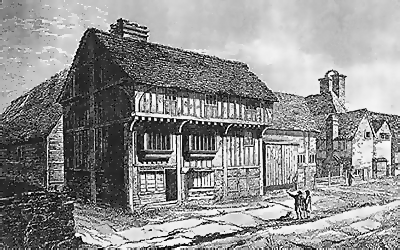Queen Emma's Ordeal by Fire, Part 1 (original) (raw)
RBH Home
Maps & Travels
Articles
Legends
Towns & Villages
Castles & Houses
Churches
Biographies
Gentry
Family History
Odds & Ends
Mail David
Royal Ordeal by Fire
Introduction There is a curious legend concerning the Old Minster at Winchester and the gift to the See of several old manors of the southern counties of Hampshire, Wiltshire, Berkshire and Buckinghamshire. With the assistance of extracts from the Domesday Book, Herbert J. Reid endeavours to prove this legend untrue.
There is a curious legend concerning the Old Minster at Winchester and the gift to the See of several old manors of the southern counties of Hampshire, Wiltshire, Berkshire and Buckinghamshire. With the assistance of extracts from the Domesday Book, Herbert J. Reid endeavours to prove this legend untrue.
The Story demands most careful and critical examination, for, in common with most legends, it undoubtedly originated in some fact, which at a later date became perverted. The great difficulty is to ascertain the facts. Nearly all the historians from the 13th century downwards, relate the story of Queen Emma and her Ordeal of walking over red hot ploughshares in Winchester Cathedral (ie. the Old Minster). Before relating the legend there are two remarks to be made, which should be carefully borne in mind. In the first place, no contemporary authority for the story exists; further, what we are able to gather from contemporary writings, cannot be easily reconciled with it.
Queen Emma, the heroine of this story, is believed, in Berkshire, to have resided at Wargrave, one of the manors in question. Until the year 1827, a very ancient building, called Queen Emma's Palace, was pointed out as having been occupied by her; but although of great antiquity, we believe that this building does not date back beyond the end of the 15th century, probably even later. Our illustration is from a drawing by the late Mrs. Hitchings, taken in the year 1827. The Palace was demolished in that year, but a barn, also of great age, remained until well into the late nineteenth century, which bore the name of Emma's Barn. Examples of the tenacity with which names connected with any legend will cling to a locality, even when they have no foundation whatever in fact. In this case it will be shown that Emma, although she may possibly have resided at Wargrave, certainly never possessed the Manor, and consequently could not have given it to Winchester Cathedral, as a thank-offering for her delivery from the Ordeal.
Emma, or �lfgifa, fair Maid of Normandy, was, it will be remembered, wife first of King Aethelred the Unready, and afterwards of Canute the Great. She was the mother, therefore, not only of Harthacnut, but also of Edward the Confessor. Edward, after he obtained the crown, appears to have had little confidence in his mother, probably in consequence of her having favoured the pretensions of the children of her second husband, instead of supporting the claim of Edward to the throne. It is impossible to enter into a discussion here as to the merits of the case, but it is certain the mind of Edward was easily influenced. So that the fact of his mother being despoiled of her property by him at the instigation of others need excite little surprise - the more so, as he acted in a precisely similar manner by his wife, Edith. Upon this disgrace, perhaps, the whole story has been founded.
The following account, for which we are largely indebted to Professor Freeman's "Norman Conquest," is a summary of the legend. It will be found at great length in Dugdale's Monasticon, fo. 34, Vol. 1, and also in Bromton, X. Scriptores, fo. 941.
